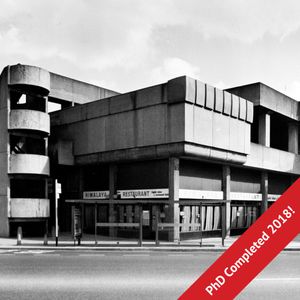Architectural Project in the City: The Town Centre
In 1960’s England, a new architecture project on the city emerged within discourse and practice: the town centre. This book examines a specific set of case studies from four different regions of England, each example designed by Owen Luder. These case studies reflect discourse of the time, challenged the field of architecture’s modus operandi, expanded architectural discourse, and created an urban architecture that engaged with many constituencies of the city.
One dominant motivation behind the emergence of these projects was the rebuilding effort in England which focused on reconstructing bombed out city centres. By the 1960’s, local and national governments increased land-use permits for privately funded commercial spaces in city centres, a shift from housing and school construction efforts immediately following the war.
Simultaneously, Luder started his first practice in the early 60’s, and quickly partnered with developers and investors, creating a perfect storm of conditions for building town centres—money, resources, and vision.
These projects have been type-cast as megastructures and brutalist projects. This research extracts Luder’s project from these categories and reinserts them into architectural discourse. Luder’s town centres choreographed specific architectural disciplinary effects thereby creating new atmospheres and experiences in the city, specifically when it came to shopping. This was accomplished by engaging with the Townscape movement, another misunderstood discourse in English architectural history. Therefore, this book also spotlights the origins of Townscape as a form of radical picturesque, as described in 1949 by the founder of Architectural Review, I. de Wolfe. The emergence of this discourse on the radical picturesque in post-war England paved the way for Luder’s project and fostered direct connections with key theoretical figures writing about Townscape in the 60’s.

